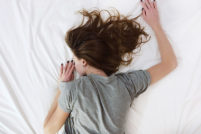Many people see either an improved mood or feelings of sadness and lethargy that is accompanied in some cases with depression symptoms as the seasons change that scientists call Seasonal Affective Disorder or SAD.
Seasonal Affective Disorder doesn’t have to control your life. You can take control back and beat the seasonal blues.
If you believe you or someone you care about might suffer from Seasonal Affective Disorder, read on to find out the following:
What is Seasonal Affective Disorder?
According to Psychiatric Times, changes in mood based on the season has been recorded for many centuries, quoting Greek philosopher Posidonius as writing “melancholy occurs in autumn, whereas mania in summer.” [1]
These days, the Mayo Clinic defines Seasonal Affective Disorder as “a type of depression that’s related to changes in seasons — SAD begins and ends at about the same times every year.”
While the most extreme cases are rare, SAD affects about 25% of the population. Seasonal Affective Disorder drains you of your energy and makes you more irritable and moody. In most cases, Seasonal Affective Disorder occurs between fall into winter. However, it can occur from spring into summer. [2]
Seasonal Affective Disorder (SAD) is considered to be a form of depression in the medical community. The disorder affects about 4 – 6 percent of the population with more depression like symptoms. Another 10 to 20 percent experience what are considered mild SAD symptoms. [3]
Researchers indicate that women are four times more likely than men to develop SAD.
Additionally, most cases of SAD do not start until early adulthood, and each year of your life, your chances of developing SAD go down. Teens and children are much less likely than adults to develop SAD.
Though typically linked to depression, there is information that suggests that it is also linked to bipolar disorder. In these cases, it is likely that during the spring and summer months, a SAD sufferer may experience a more manic high. [4]
Symptoms of Seasonal Affective Disorder
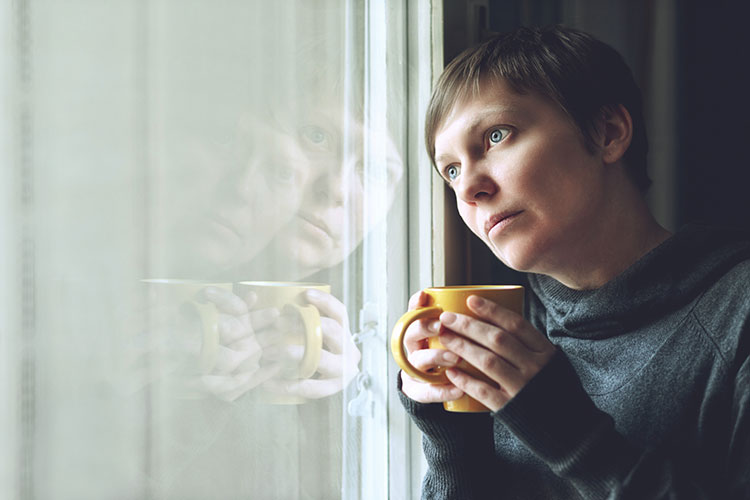
Symptoms of Seasonal Affective Disorder vary and differ based on the time of year that causes your SAD. There is an overlap between SAD and depression symptoms.
With SAD however, the symptoms start mildly at the change of the season and may worsen as the season goes on. The symptoms will then lessen as the season changes again.
Symptoms of Depression That Could Be Symptoms of SAD
- Feeling Hopeless: could be accompanied by feelings of worthlessness
- Lack of Energy: feeling sluggish and unmotivated
- Daily Depression
- Unintentional Weight Change: changes in appetite occur with both SAD and depression
- Sleep Issues: either insomnia or sleeping too much
- Feeling Agitated: agitation may make it hard to get along with others
- Concentration Issues: lack of focus
- Suicidal Thoughts: If you are feeling this way at all or know of anyone who is, seek professional help immediately.
- Crying Spells: bouts of crying for no reason.
- Decreased Sex Drive
- Body Aches and malaise
Many of these symptoms can indicate serious mental health concerns. You should see your doctor immediately if you experience these symptoms to rule out a major depressive disorder.
Symptoms of fall and winter SAD generally make you feel sluggish. They include:
- Lack of energy
- Irritability
- Fatigue
- Problems getting along with others
- Cravings for carbohydrates and other “comfort foods”
- Oversleeping
- Weight gain
Conversely, symptoms of warm weather SAD may make you feel manic. You may experience the following if you have spring or summer SAD:
- Insomnia
- Lack of appetite
- Weight loss
- Anxiety
Like most disorders and illnesses, how people respond to Seasonal Affective Disorder (SAD) will vary by person. Only a doctor can officially diagnose SAD, so if you feel you might be experiencing SAD, talk to your doctor as soon as possible.
What Causes Seasonal Affective Disorder (SAD)?
The exact causes of SAD are still not well known . However, a variety of researchers all seem to point to the same few causes of SAD. [5]
Most experts agree that the amount of sunlight is a likely cause of Seasonal Affective Disorder. Exposure to sunlight has the following effects on the body:
- Sunlight may trigger the body to produce serotonin, a hormone that helps regulate mood. When there is not enough light, you may experience symptoms similar to depression.On the contrary, when there is copious amounts of light, you may feel more positive, and in some cases, manic.
- A rapid increase or decrease in sunlight upsets your biological clock. The changes in light could drastically affect your sleep patterns, which can lead to depression. [6]
Of course sunlight is not the only cause of Seasonal Affective Disorder. Other factors that may cause SAD include:
- Melatonin levels: The changes in the seasons can disrupt the balance of your body’s level of melatonin. This natural chemical plays a role in sleep patterns and mood. [7]
- Low Vitamin D Levels: A study published in The Journal of Nutrition, Health, and Aging titled “Vitamin D vs Broad Spectrum Phototherapy in the Treatment of Seasonal Affective Disorder” indicates that a number of SAD cases have a common link of low vitamin D levels.Though the link is not exactly clear, it is believed that there may be a connection. [8]

What Are Some Of The Best Ways To Treat Seasonal Affective Disorder?
Treatments for Seasonal Affective Disorder (SAD) are varied in both what and how they reduce and eliminate symptoms of SAD. Before trying any of these treatments yourself, be sure to consult a doctor or other medical professional.
This is especially crucial if you have been diagnosed with bipolar, consulting a doctor is extremely crucial even for the least invasive treatment options.
Potential Treatments for SAD
1. Time

For people suffering mild cases of SAD that does not affect daily life, the passage of time may be the only treatment needed. In even some of the most extreme cases of SAD with the worst symptoms, the change of season back to spring or summer will effectively end the symptoms.
2. Light Therapy Box
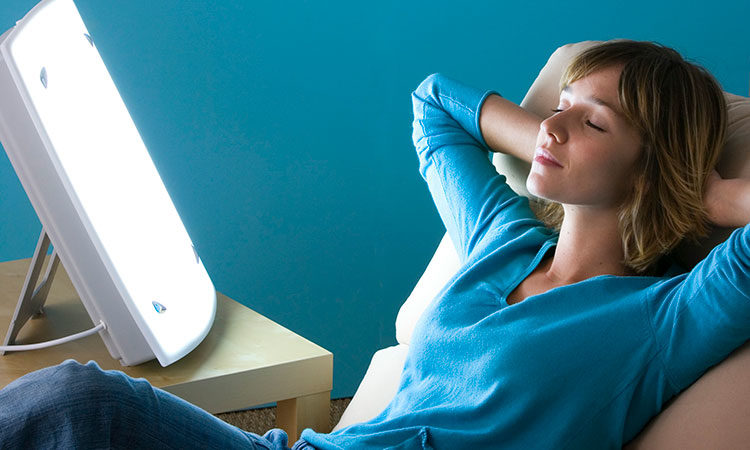
Backed by research, light therapy boxes are designed to imitate sunlight. These boxes trick the body into producing melatonin. Typical treatments include 30 minutes a day for a week or two in front of the box.
Though it may not be necessary or as effective over time, many people who use a light therapy box use it for the entirety of the season [9].
A study in the Journal of Affective Disorders titled “The Duration of Light Treatment and Therapy Outcome in Seasonal Affective Disorder” suggests that one week is as effective as two weeks, which may mean the effects wear off over time [10].
Other research indicates that using the light therapy box in the morning for a half hour is the most effective use of the device. [11]
3. Keep A Journal

Writing down your thoughts each day can have a positive impact on your mood. The University of Michigan Depression Center Plan says plan to write for about 20 minutes on most days of the week.
You should include your thoughts, feelings, and concerns. The best time is in the evening before going to bed, so that you can reflect on all that happened in the last 24 hours.
4. Dawn Simulators
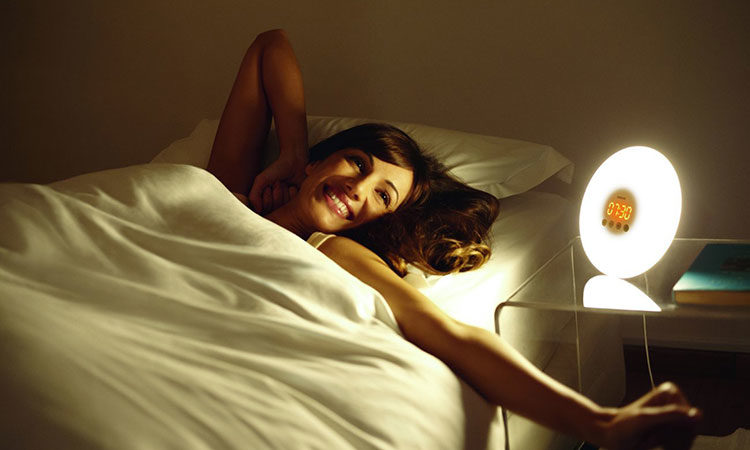
Some people who suffer from SAD report some success using dawn simulators. Similar to light boxes, dawn simulators create light that mimics sunlight.
The difference is that the dawn simulator acts as an alarm clock, slowly increasing the amount of light until it naturally wakes you up with the brightness.
Similar to most products, not all models offer the same level of effectiveness. The best models offer a fuller spectrum of light that better emulates natural sunlight.
In a study titled “Dawn Simulation vs. Bright Light in Seasonal Affective Disorder: Treatment Effects and Subjective Preference”, researchers found that dawn simulators can be as effective as light therapy for those suffering from mild cases of SAD.
If you are a heavy sleeper, you may want to still use an alarm clock to make sure you don’t oversleep.(12)
5. Talk With Your Doctor

Talking to your doctor is one of only a few ways to determine for sure you have SAD. But beyond this, your doctor can help you figure out ways to cope and treat your SAD case.
Beyond your family doctor, you may benefit greatly from psychiatrist or other licensed therapist. Working through your feelings can help significantly with SAD and other types of depression. [13]
6. Antidepressants

As with many drugs, a doctor’s prescription is required for antidepressants and your doctor will know best if antidepressants are right for you.
If antidepressants are the route you and your doctor want to take, it is important to be aware and watch out for side effects that may include:
- Sleepiness
- Thoughts of suicide
- Upset Stomach
- Headaches
- Shakiness [14]
It is recommended that antidepressants be taken every winter, not just ones that you feel symptoms coming on. Also, it is important to be sure to start taking your medication before your symptoms become too severe. [15]
7. Vitamin D

Low levels of vitamin were linked to seasonal affective disorder in research reported in 2014 in the journal Medical Hypotheses.
A 2014 study published in the journal Nutrients found that people who took vitamin D supplements saw significant improvement in their depression.
Be sure to talk to your doctor about testing your vitamin D levels and whether supplements will work for you.
8. Get Away From It All

If you can afford it, planning a mid-winter or fall trip can help you fight SAD symptoms. Researchers claim that taking a winter vacation to warmer climates can help you with reducing or eliminating SAD symptoms.
Travel gives you a break from your daily routine, and it can also help you escape cold and overcast skies. This escape helps lift your spirits — even a few days in a sunny place can be helpful with SAD. [16]
9. Aromatherapy
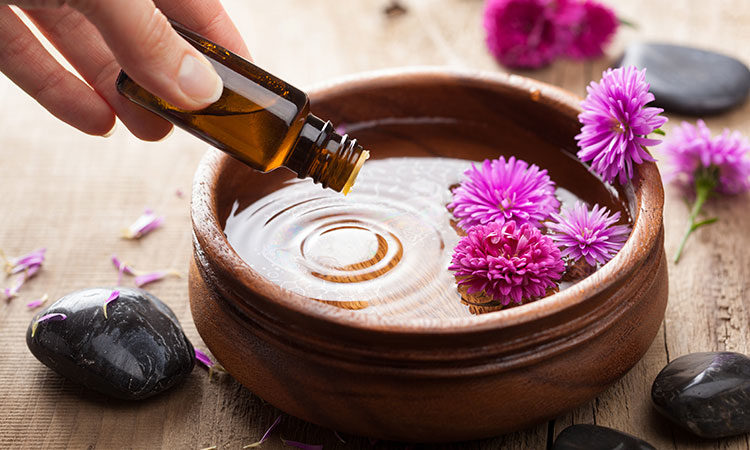
Aromatherapy offers a much more natural solution for treating SAD symptoms. There are a number of essential oils whose natural essences can help combat symptoms of depression.
These oils can be added to a bath, a diffuser, a boiling pot of water, and, in some cases, directly to your skin.
Some excellent oils to try for your SAD symptoms include:
- Lavender Oil: This mildly fragrant oil may be a good substitute for anxiety medications. A double blind randomized study showed that participants with similar symptoms to Seasonal Affective Disorder that took lavender capsules reduced their anxiety as much as other sufferers on a prescription medication. [17]
- Bergamot oil: Derived from a citrus fruit in southeast Asia, this oil a sweet, subtly spicy scent that promotes relaxation. A study done in Taiwan showed that smelling bergamot oil lowers blood pressure and heart rate. High blood pressure and faster heart rates are associated with symptoms of depression. [18]
- Poplar Tree Oils: The Journal of Natural Medicines conducted a study in 2015. In this study, researchers found that essential oils from the poplar tree helped depressive disorders. [19]
- Clary Sage Oil: This oil helps ease the nervous system, which makes it particularly effective at treating depression and anxiety symptoms. The oil’s high levels of esters, substances that have mild sedative properties that help relax you.
- Sweet Orange Oil: Sweet Orange Oil helps, as citrus fruits often do, remind you of sunshine and good moods. Research on citrus fragrance and mood shows that smelling a citrus scent like sweet orange oil can help restore balance to hormone levels. As a result, study participants took a smaller amount of their antidepressant medications while maintaining a better mood. [20]
10. Increase Sunlight

Despite the cold often associated with winter months, be sure to go outside as much during the day as possible. In this way, you can maximize as much of the sunlight as possible.
Try to take a walk on your lunch break, or take walk around the block. If it is really cold, be sure to bundle up, but the sun exposure is more important than the physical cold you’ll feel.
Other ideas for getting more light is open up your blinds during the day. Don’t shut out the light when it’s there. Also, try to move your activities nearer to windows if you can.
According to the University of Michigan Depression Center, you want to be in bright environments whenever possible.
11. Exercise
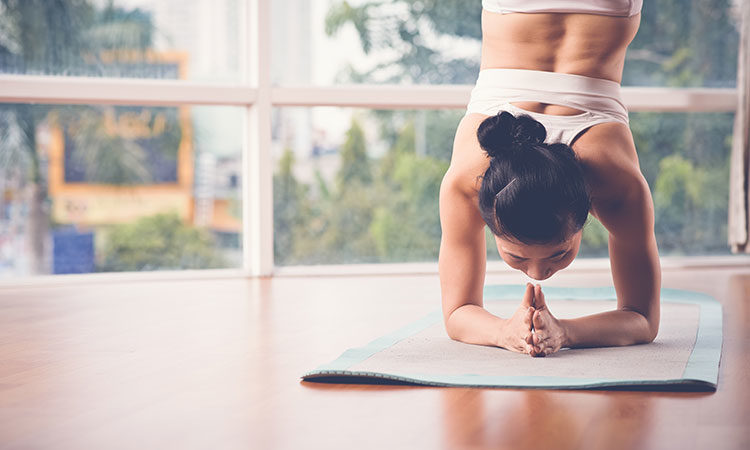
Exercise helps with not only SAD symptoms, but other depressions and mood disorders. Outdoor exercise is the most beneficial, but if you can’t exercise outside because it’s cold, rainy, or snowy, you can use a treadmill, stationary bike, elliptical machine, or any number of other exercise machines close to a window in your home or at your local gym.[21]
Exercise can also help offset weight gain that is common with Seasonal Affective Disorder. But as with using antidepressants, be sure to discuss exercise routines with your doctor to be sure you are healthy enough to engage in your chosen activity.
Some exercises to try include:
- Walk for 30 minutes: When walking, try to set a pace that is more vigorous than a stroll but not so fast that you’ll be too sore the next day.
- Yoga: Unlike some of other classes you see at many gyms, yoga helps soothe your mind as you work your body. Be sure to position yourself near a window for best results.
- Dancing: Cutting the rug can be fun. Having a good time while working up a sweat can help you boost your mood even more than the endorphins do on their own.
11. Stick To That Schedule
One of the symptoms of seasonal affective disorder is trouble sleeping, which results in loss of sleep or not enough. If you can maintain a regular schedule, you will help improve sleep, which can help alleviate symptoms of SAD.
In addition to getting to bed around the same time each night, maintain a regular eating schedule, which will help you reduce overeating associated with SAD. So spend some more time on your mattress and go to bed early.
Conclusions: What’s the best way to seek help?
As with any treatment plan, what works best for you or your family member suffering from SAD will vary greatly. One of the most important things you need to do is be proactive in seeking help and trying different methods until you find one or a few that work for you.
If you are ever concerned with your choices or need more information about your options, be sure to consult with your doctor. Remember to be gentle with yourself while dealing with Seasonal Affective Disorder.
Cutting yourself some slack, taking care of yourself, and following your doctor’s suggestions can help you manage your mood as seasons change.

